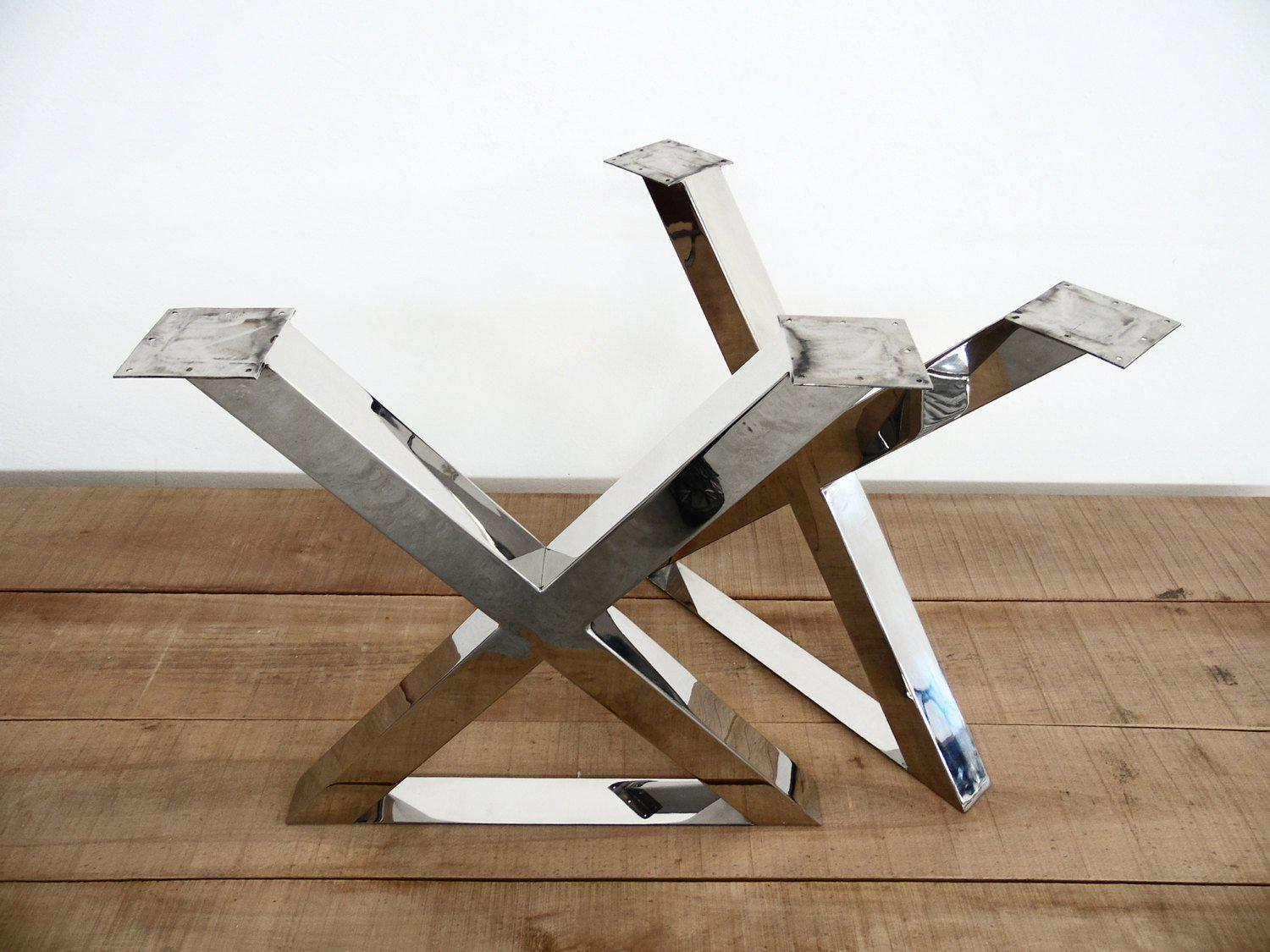Dining Room Table Legs: What to Consider Before You Buy
Dining Room Table Legs: What to Consider Before You Buy
Blog Article
A Comprehensive Look at Table Leg Styles: Locating the Suitable Match
Picking the ideal table leg style is critical for both visual charm and practical capability. Standard four legs offer ageless beauty and stability, while the stand base offers increased legroom and a modern-day look. For those with bigger tables, trestle legs guarantee sturdy assistance, whereas hairpin legs present a mid-century contemporary ambiance with their minimalist design. The x-shaped legs mix contemporary design with enhanced security. Each of these options brings special benefits, making the selection greater than simply a matter of choice. Explore additionally to discover which design perfectly enhances your dining area and lifestyle.
Traditional Four Legs
Among the various kinds of eating table leg designs, the standard four-leg style remains a timeless choice for many houses. 4 legs supply balanced support, ensuring the table continues to be secure and qualified of bearing substantial weight (dining room table legs).
From a visual viewpoint, the standard four-leg style can be easily adjusted to different interior designs. Whether crafted from timber, metal, or a mix of products, these legs can be intricately sculpted, smooth and minimalistic, or anything in between. Their flexibility allows them to enhance both rustic and contemporary settings effortlessly.
Moreover, the uncomplicated structure of the four-leg design promotes simplicity of movement and positioning within a room. Unlike even more complicated bases, this design lessens obstructions, giving sufficient legroom for restaurants. In summary, the traditional four-leg eating table leg style weds enduring style with useful functionality, making it a sharp selection for those seeking both type and feature in their dining furnishings.
Pedestal Base
Commonly celebrated for its classy and space-efficient design, the stand base is a notable choice to the standard four-leg arrangement in dining table leg styles. This distinctive base generally features a single central column sustaining the tabletop, which can vary in kind, from ornately carved wood to streamlined, modern metal. Among the primary advantages of the stand base is its capacity to maximize legroom and seating flexibility. Without edge legs, diners are paid for better freedom of movement, making it a suitable choice for round and oval tables that promote even more intimate and comprehensive gatherings.
Moreover, the pedestal base's central support can handle substantial weight, permitting making use of much heavier tabletops, such as marble or thick hardwood. This stamina combined with its aesthetic adaptability makes the stand base a prominent option in both standard and modern indoor settings. It can perfectly integrate with various design themes, from timeless style to minimal modernity. In addition, the main column itself uses a canvas for complex styles and artistic expressions, adding a component of aesthetic rate of interest below the table. In recap, the pedestal base incorporates capability with design, making it a refined and practical alternative for varied dining settings.
Trestle Legs
Trestle legs provide a durable and timeless structure for dining tables, identified by their horizontal cross-bracing and tough support light beams. Originating from middle ages times, this style has actually developed yet preserved its necessary structure, making it a seasonal favorite in both standard and contemporary settings. The main trestle beam, usually supported by 2 or more vertical blog posts, offers phenomenal stability, enabling larger table lengths without the demand for additional legs.
A considerable benefit of trestle leg tables is the ample legroom they use. Unlike tables with 4 corner legs, the absence of blockages at the table's sides offers unobstructed room for chairs and diners, improving convenience and accessibility. This makes trestle tables check these guys out optimal for suiting larger gatherings, whether in a dining-room or a reception hall.
The visual flexibility of trestle legs is notable. Readily available in a selection of materials such as wood, metal, and composite, they can be completed to enhance a vast array of interior styles. From rustic farmhouse to smooth contemporary styles, trestle legs can be tailored to match specific preferences. Their long-lasting allure and functional advantages make trestle legs an engaging option for those looking for both design and usefulness in their table.
Barrette Legs

The allure of hairpin legs depends on their simpleness and versatility - dining room table legs. Offered in a variety of materials, including steel and brass, they can be completed in countless colors to complement various indoor designs. Whether matched with a rustic wood tabletop or a contemporary glass surface, barrette legs easily mix functionality with a touch of vintage appeal
Longevity is another noteworthy function of barrette legs. Regardless of their fragile look, these legs are engineered to bear substantial weight, guaranteeing the table continues to be secure and safe and secure. Additionally, they are relatively easy to mount, making them a prominent option for do it yourself fanatics and specialist web link furnishings manufacturers alike.
X-Shaped Legs

Constructed from products such as steel, timber, or a combination of both, X-shaped legs can be customized to match various style choices. Steel legs frequently offer a sleek and industrial feeling, perfect for loft-style houses and contemporary eating spaces. On the various other hand, wood X-shaped legs offer a warmer, a lot more rustic allure, suitable for farmhouse or eclectic interiors. The convenience in materials allows house owners to tailor their table to better fit their general style system.
Furthermore, the engineering behind X-shaped legs makes sure also weight circulation, lessening the threat of tottering and boosting durability. This makes them particularly well-suited for larger dining tables that require additional assistance. In significance, X-shaped legs mix practical design with modern-day aesthetics, making them a timeless choice for varied eating settings.
Verdict
A thorough understanding of dining table leg styles exposes the distinct characteristics and advantages of each design. Trestle legs make certain durable support for larger tables, and hairpin legs introduce a mid-century modern aesthetic.
Report this page